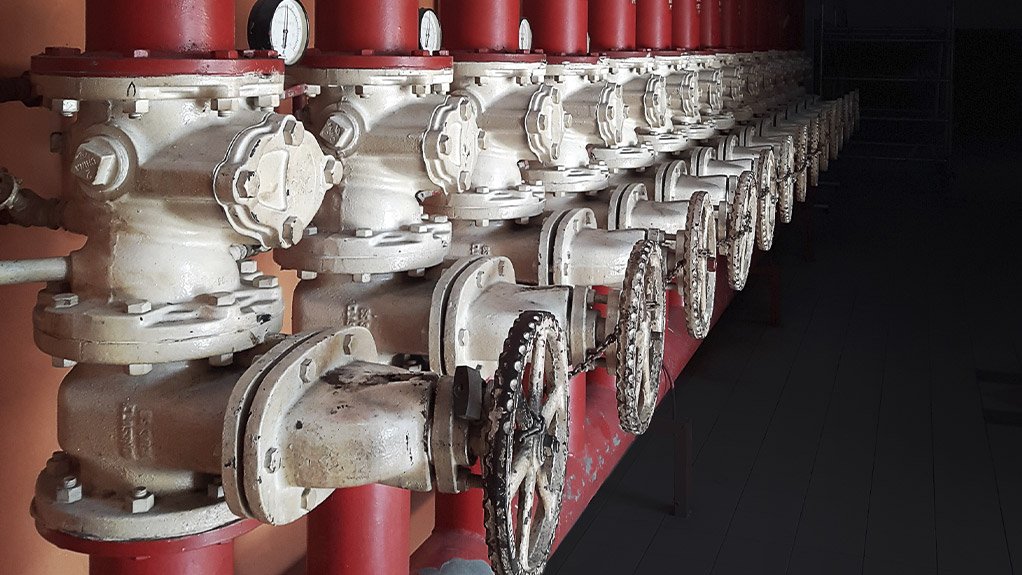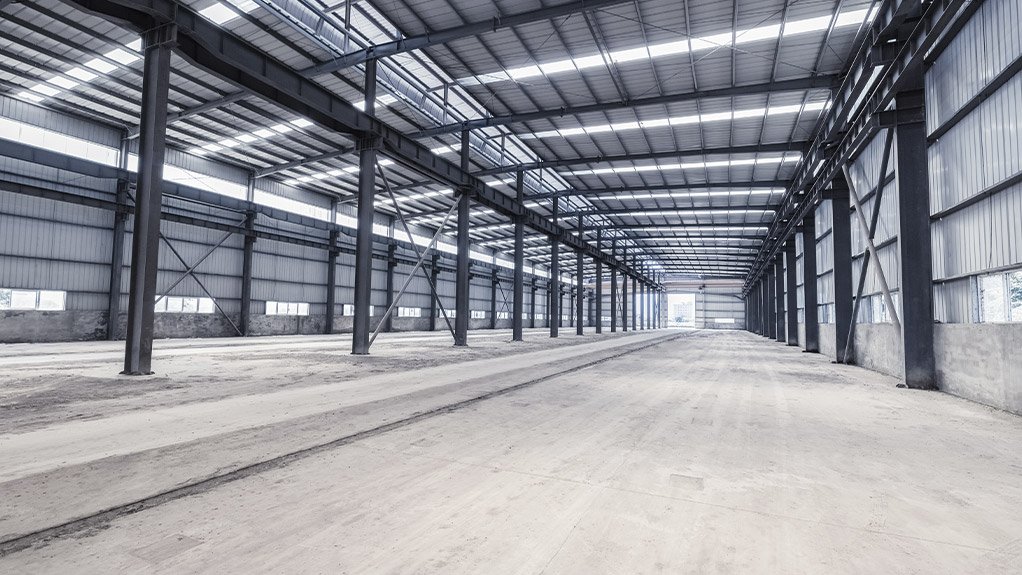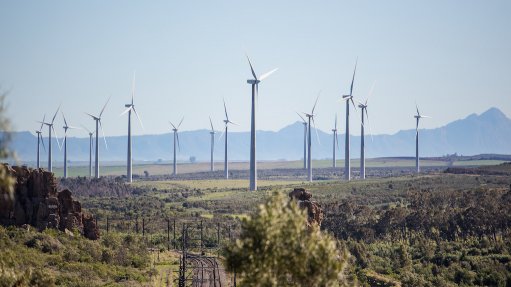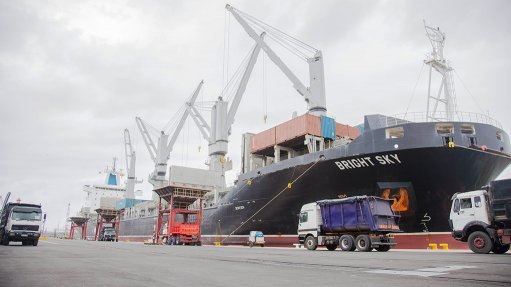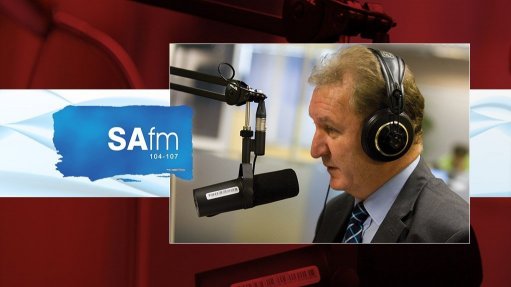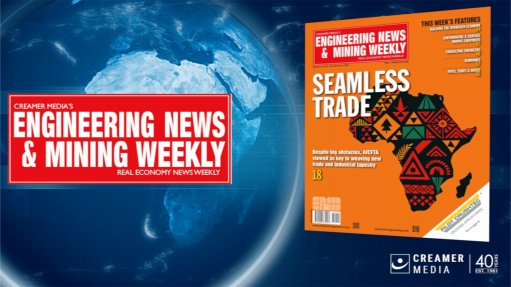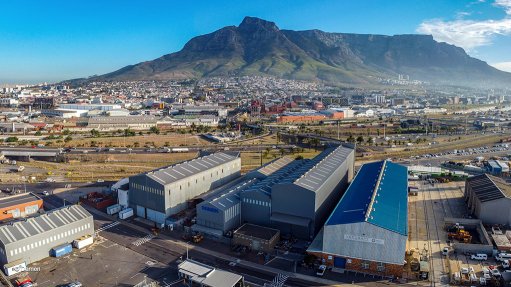Fire safety for exposed steel structures in buildings
This article has been supplied as a media statement and is not written by Creamer Media. It may be available only for a limited time on this website.
Exposed steel structures refer to the steel components within a building that are not sprinkler protected, covered or encased by other materials. These structures are often found inside buildings, such as the steel framework supporting floors and roofs in large warehouses or commercial buildings.
Steel is a common material in construction due to its strength and durability. However, it has a critical weakness when exposed to high temperatures above the critical temperature of the steel cross section.
When steel reaches around 450°C to 550°C, its molecular structure changes, making it plastic-like and losing its strength. This phenomenon can lead to structural failures, as the once rigid steel becomes unable to support loads, causing collapses.
For example, during the collapse of the World Trade Center towers, the steel core failed due to extreme heat that weakened critical supports, leading to the buildings’ ultimate collapse, notes ASP Fire CEO Michael van Niekerk. Such fire risks can be mitigated by implementing the following measures:
- Sprinkler systems: To protect steel structures from reaching critical temperatures, buildings are often equipped with sprinkler systems to help keep the steel cool during a fire.
- Smoke ventilation: Proper smoke ventilation can help remove hot gases from a building, preventing the internal temperature from rising to levels that could compromise the steel structure.
- Intumescent paint: This special paint expands when exposed to heat, forming an insulating layer that protects the steel from high temperatures.
- Cladding and encasing: Steel can be clad in fire-rated boards, encased in concrete, or other fire-resistant materials to enhance its fire resistance.
For buildings, especially older ones that may not meet current fire safety standards, retrofitting options are available, points out van Niekerk. Intumescent paint can be sprayed onto existing steel structures, or they can be boarded up with fire-resistant materials. This process is relatively cost-effective and can significantly enhance the fire safety of older buildings, such as those in Johannesburg’s CBD.
Involving fire safety experts like ASP Fire during the design phase of a building can help address potential fire risks early on, ensuring that all fire safety measures are integrated into the construction plan. This proactive approach not only enhances safety but can also be cost-effective in the long run by preventing expensive retrofits and ensuring compliance with safety standards like SANS 1440.
Comments
Press Office
Announcements
What's On
Subscribe to improve your user experience...
Option 1 (equivalent of R125 a month):
Receive a weekly copy of Creamer Media's Engineering News & Mining Weekly magazine
(print copy for those in South Africa and e-magazine for those outside of South Africa)
Receive daily email newsletters
Access to full search results
Access archive of magazine back copies
Access to Projects in Progress
Access to ONE Research Report of your choice in PDF format
Option 2 (equivalent of R375 a month):
All benefits from Option 1
PLUS
Access to Creamer Media's Research Channel Africa for ALL Research Reports, in PDF format, on various industrial and mining sectors
including Electricity; Water; Energy Transition; Hydrogen; Roads, Rail and Ports; Coal; Gold; Platinum; Battery Metals; etc.
Already a subscriber?
Forgotten your password?
Receive weekly copy of Creamer Media's Engineering News & Mining Weekly magazine (print copy for those in South Africa and e-magazine for those outside of South Africa)
➕
Recieve daily email newsletters
➕
Access to full search results
➕
Access archive of magazine back copies
➕
Access to Projects in Progress
➕
Access to ONE Research Report of your choice in PDF format
RESEARCH CHANNEL AFRICA
R4500 (equivalent of R375 a month)
SUBSCRIBEAll benefits from Option 1
➕
Access to Creamer Media's Research Channel Africa for ALL Research Reports on various industrial and mining sectors, in PDF format, including on:
Electricity
➕
Water
➕
Energy Transition
➕
Hydrogen
➕
Roads, Rail and Ports
➕
Coal
➕
Gold
➕
Platinum
➕
Battery Metals
➕
etc.
Receive all benefits from Option 1 or Option 2 delivered to numerous people at your company
➕
Multiple User names and Passwords for simultaneous log-ins
➕
Intranet integration access to all in your organisation





